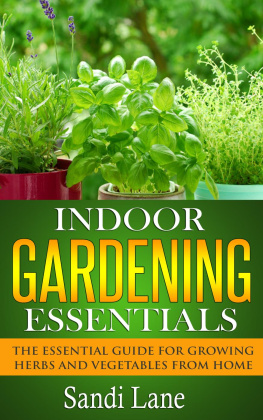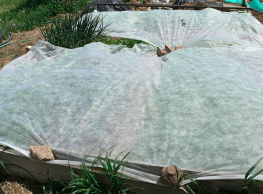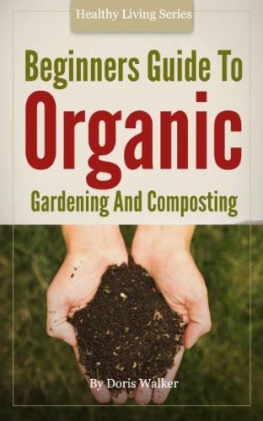Stevie Sustainable - Organic Gardening 101: How To Essentials and Tips for Starting an Outdoor or Indoor Organic Vegetable Garden
Here you can read online Stevie Sustainable - Organic Gardening 101: How To Essentials and Tips for Starting an Outdoor or Indoor Organic Vegetable Garden full text of the book (entire story) in english for free. Download pdf and epub, get meaning, cover and reviews about this ebook. year: 2012, publisher: Speedy Publishing LLC, genre: Children. Description of the work, (preface) as well as reviews are available. Best literature library LitArk.com created for fans of good reading and offers a wide selection of genres:
Romance novel
Science fiction
Adventure
Detective
Science
History
Home and family
Prose
Art
Politics
Computer
Non-fiction
Religion
Business
Children
Humor
Choose a favorite category and find really read worthwhile books. Enjoy immersion in the world of imagination, feel the emotions of the characters or learn something new for yourself, make an fascinating discovery.

- Book:Organic Gardening 101: How To Essentials and Tips for Starting an Outdoor or Indoor Organic Vegetable Garden
- Author:
- Publisher:Speedy Publishing LLC
- Genre:
- Year:2012
- Rating:3 / 5
- Favourites:Add to favourites
- Your mark:
Organic Gardening 101: How To Essentials and Tips for Starting an Outdoor or Indoor Organic Vegetable Garden: summary, description and annotation
We offer to read an annotation, description, summary or preface (depends on what the author of the book "Organic Gardening 101: How To Essentials and Tips for Starting an Outdoor or Indoor Organic Vegetable Garden" wrote himself). If you haven't found the necessary information about the book — write in the comments, we will try to find it.
QUICK NOTE: This book is for BEGINNERS to gardening (organically). You get all the basics including which tools to use for doing what, terminology, etc. If you are an advanced gardener, there are still things to be gleaned from it. Have you noticed how much more expensive organic vegetables (and fruits) are in comparison to the sprayed with pesticides and chemical fertilizer ones are? Ive seen $2.50 for an organic apple which is utterly ridiculous! Learning how to start an organic vegetable garden beginning with pure organic seeds, whether indoor or outdoor, is what Organic Gardening 101 - How To Essentials and Tips for Starting an Outdoor or Indoor Organic Vegetable Garden teaches you to do. If you are a beginner and dont know much about organic gardening, this book covers the basic how to essentials to get you started. Some of what you will learn is how to tell which soil is most conducive for growing vegetation and how to make natural fertilizer to plant your seeds in. There are a lot of components to organic gardening so being familiar with some common basic terminology provided in this book helps out when you go to your local nursery or garden store. Youll know what youre talking about and exactly what to look for. All of that is covered including what specific gardening tools youll need to use for your vegetable garden. Even the planter or container thats used for growing the seeds in (and proper lighting) plays a role in how well it grows. Especially if you are growing an indoor vegetable garden, this would need to be taken into consideration which is discussed in detail. Youll also learn about miniature organic vegetable gardening thats really fun and easy to grow. Its so nice and convenient to literally pick vegetables and herbs right off your plant without leaving your home. Helpful tips and resourceful websites that take you deeper into what to do are included to help you create the perfect organic vegetable garden from scratch!
Stevie Sustainable: author's other books
Who wrote Organic Gardening 101: How To Essentials and Tips for Starting an Outdoor or Indoor Organic Vegetable Garden? Find out the surname, the name of the author of the book and a list of all author's works by series.








